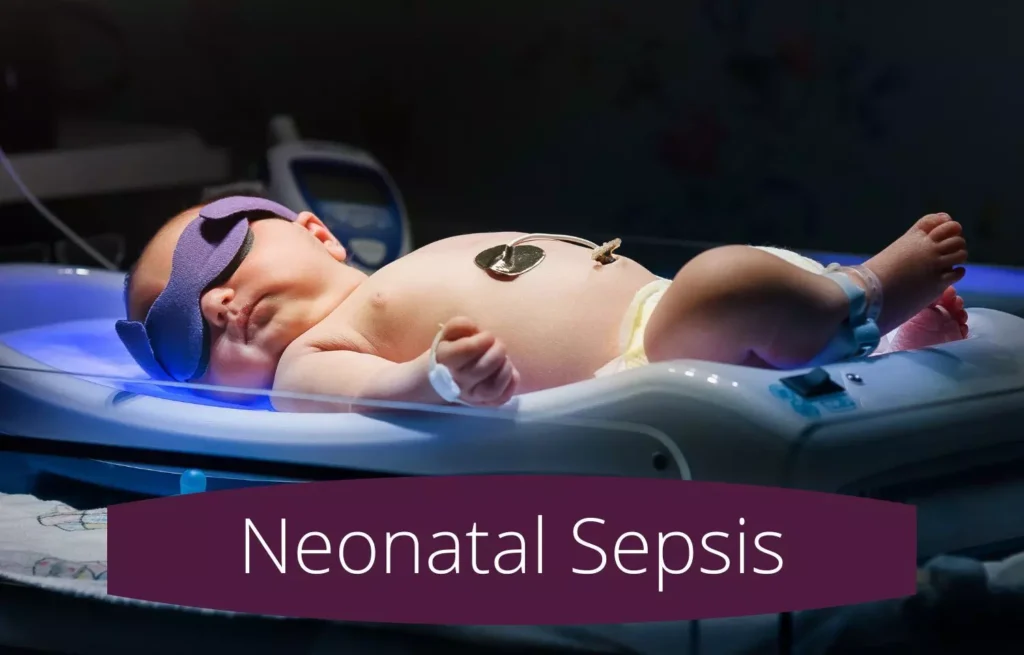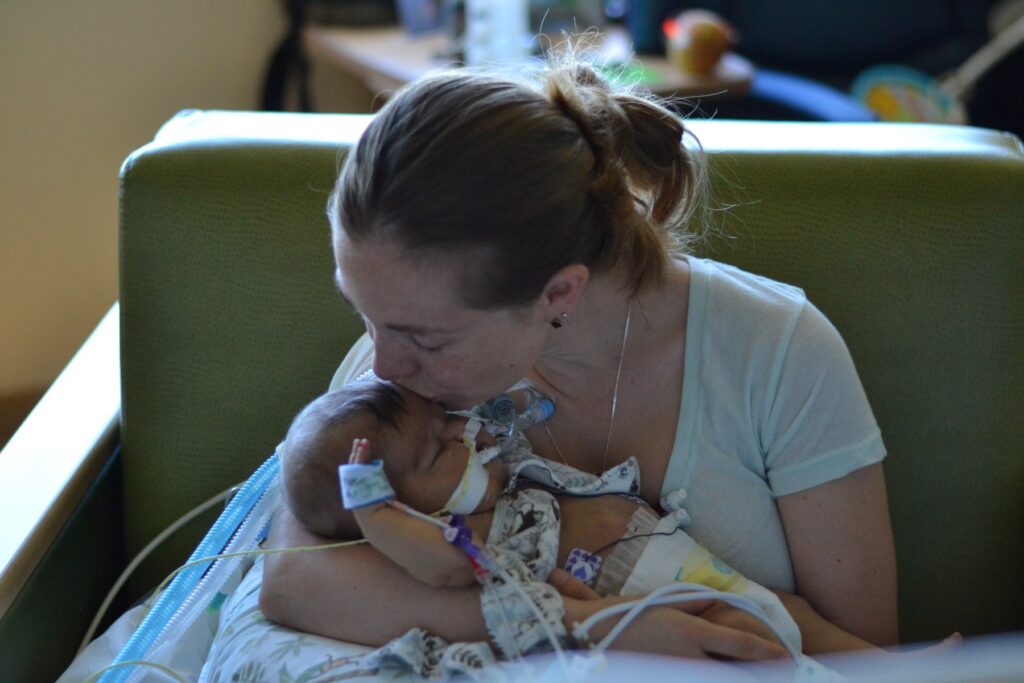As parents, one of your greatest concerns would be ensuring the health and well-being of your newborn. Understanding severe diseases that can be fatal for a newborn is crucial for early detection, prompt intervention, and the best possible outcome.
In this article, we will explore certain life-threatening conditions that newborns may face, their symptoms, and the available medical treatments. By familiarizing yourself with these conditions, you can be better placed to identify warning signs and seek immediate medical attention if necessary.
Congenital Heart Defects: Navigating the Complexities of the Heart

Congenital heart defects are structural birth abnormalities that affect the heart’s structure and normal functioning. These conditions can range from mild(a small hole) to severe(missing or ill-formed parts) and require careful monitoring and medical intervention.
Recognizing the signs of congenital heart defects is crucial for your newborn’s life. Watch out for symptoms such as difficulty in breathing, poor feeding, bluish skin discoloration, and failure to thrive.
Accurate identification of medical conditions through prenatal testing and post-birth exams can aid in deciding the most appropriate treatment for the child.
Treatment options, depending on the specific defect, may include:
Medications: Some congenital heart defects rely on medications to help the heart pump more effectively, control blood pressure, or prevent blood clots.
Catheter Procedures: In certain cases, minimally invasive catheter procedures can be performed to repair structural abnormalities. To repair the defect, these procedures thread a thin tube through a blood vessel to the heart.
Surgery: Complex congenital heart defects often require open-heart surgery to correct the structural abnormalities. Surgeons may repair heart valves, close holes, or perform more extensive procedures to improve blood flow and heart function.
In some instances, congenital heart defects may get diagnosed before the child’s birth, allowing for early intervention and planning. It is imperative to visit a pediatric cardiologist regularly in order to keep track of the heart’s condition and provide the necessary treatment as the child develops.
Neonatal Sepsis: Detecting and Treating a Life-Threatening Infection

Neonatal sepsis is a severe bacterial infection that can progress at a fast rate, and be life-threatening for newborns less than 28 days old. It occurs when bacteria spread across the body through blood.
Common symptoms of neonatal sepsis include fever, difficulty feeding, breathing problems, and a high heart rate. Accurate and timely diagnosis and intervention are essential for achieving positive results. Treatment options for neonatal sepsis include:
Antibiotics: Newborns suspected of having sepsis get started on broad-spectrum antibiotics immediately. These medications target a wide range of bacteria until specific test results identify the exact bacterial strain causing the infection. Once identified, targeted antibiotics are administered.
Supportive Care: Alongside antibiotic treatment, newborns with sepsis may require additional supportive care, such as intravenous fluids to maintain hydration, respiratory support if breathing is compromised, and other interventions to stabilize vital signs.
Close monitoring of vital signs and regular communication with healthcare providers is vital in managing this life-threatening infection.
Necrotizing Enterocolitis (NEC): Addressing Intestinal Complications

Necrotizing enterocolitis is a severe gastrointestinal condition that affects premature newborns. It involves inflammation and damage to the intestines, which can lead to tissue death and life-threatening complications.
While the exact cause is not understood, factors such as prematurity, formula feeding, and reduced blood flow to the intestines may contribute to its development.
Symptoms of NEC may include feeding intolerance, abdominal bloating, bloody stools, and a decreased level of activity. Prompt diagnosis and treatment are crucial. Treatment options for NEC include:
Supportive Care: In the early stages of NEC, treatment often involves temporarily stopping the feedings and providing intravenous fluids to allow the intestines to rest and heal. Close monitoring of the baby’s condition, including vital signs and abdominal X-rays, helps healthcare providers determine the best course of action.
Antibiotics: Antibiotics are administered to treat the underlying infection that often accompanies NEC. They help combat bacterial overgrowth in the intestines and reduce the risk of complications.
Surgery: In severe cases of NEC, surgical intervention may be necessary. Surgeons remove damaged portions of the intestine and re-establish healthy bowel continuity. This procedure aims to prevent further complications and restore normal gastrointestinal function.
There are certain infant formulas, like Enfamil and Similac, that are available in the market and are also given to newborns in hospitals. According to TorHoerman Law, these infant formulas carry the risk of causing NEC in premature infants.
In such cases, you may consider seeking legal recourse by filing an NEC lawsuit to hold responsible parties accountable for any harm caused to your newborn. While pursuing legal action is a personal decision, consulting with a medical malpractice attorney can provide guidance and assistance in navigating the legal process.
Respiratory Distress Syndrome (RDS): Supporting Developing Lungs

Respiratory Distress Syndrome is a condition that affects premature infants due to underdeveloped lungs and insufficient surfactant production.
Surfactant is a compound that helps keep the alveoli in the lungs expanded, facilitating the exchange of oxygen. Without enough surfactant, the lungs become stiff, making it challenging for your baby to breathe.
Common symptoms include rapid breathing, chest retractions (visible inward movement during breathing), grunting sounds, and bluish skin discoloration. Treatment options for RDS include:
Surfactant Replacement Therapy: Newborns with RDS may receive surfactant replacement therapy to supplement the inadequate levels of inherently produced surfactant. This therapy involves administering surfactant through a breathing tube inserted into the baby’s airway.
Respiratory Support: Premature infants with RDS often require respiratory support to help them breathe better. This may require using a continuous positive airway pressure(CPAP) machine or a ventilator to provide oxygen and help with respiration.
Neonatal Intensive Care: Newborns with RDS are generally admitted to the neonatal intensive care unit (NICU) for close monitoring and specialized care. The NICU team monitors vital signs, oxygen levels, and respiratory function while providing additional support as needed.
In addition to medical interventions, healthcare providers focus on creating an environment in the NICU that minimizes stress, promotes healthy lung development, and supports the overall well-being of the newborn.
Conclusion

As parents, it is natural for you to feel concerned about the well-being of your newborn. By understanding the severity of diseases that can be fatal for a newborn and being familiar with their symptoms and available treatments, you are taking an important step toward safeguarding your baby’s health.
Early detection and prompt medical intervention are crucial in these cases, as they can significantly improve the chances of a positive outcome.
Remember, open communication with healthcare providers and regular check-ups are essential throughout your journey as parents. Stay vigilant and watch for any warning signs or symptoms that may indicate a potential health issue.
While it may be unsettling to think about the possibility of your newborn facing a severe disease, it is important to stay informed and prepared. Advances in medical technology and the expertise of healthcare professionals offer hope and the potential for successful treatments.




